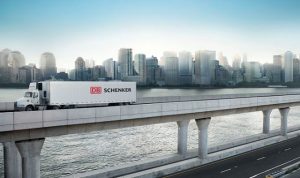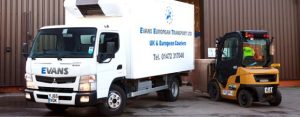Germany experiments with truck platooning
All trucks in the platoon are connected via electronic car-to-car communication, thus, cutting CO2 emissions and savings costs while ensuring the safety of the drivers
Defined as a vehicle system for road traffic in which at least two trucks on the freeway are networked by a technical system, allowing them to drive one after the other at a very close distance, platooning is envisioned to soon be the norm in Germany.
Convinced that the electronic coupling of the vehicles will ensure safe travel in traffic, cut CO2 emissions and costs, Germany’s Federal Ministry of Transport and Digital Infrastructure has offered 2 million Euros to experiment on the project.
DB Schenker, MAN, and Hochschule Fresenius are receiving the funding from the Federal Ministry for their joint development of networked truck convoys. The project began in June and will last through January 2019.
The proponents say the partners will test truck convoys in everyday operation at the digital test site, the A9 freeway, for several months to analyze their suitability for practical application and system safety in real traffic scenarios as well as within the logistics processes of DB Schenker. This phase is also aimed at investigating the potential effects of the new technology on the trick driver profession.
“Automated and networked driving will soon be a reality. The platooning project will bring the technology from the lab to the roads. High-tech trucks maintain safe distances and comm-unicate with one another. Traffic runs more smoothly and safely, and road capacity and cabin comfort go up. This relieves stress on drivers and the environment,” said Alexander Dobrindt, Federal Minister of Transport and Digital Infrastructure.
“With this project, DB is expanding its further expertise as a modern mobility and logistics provider. The Ministry is bringing innovative research projects focused on automated and networked driving to the road and is providing funding in the sum of 100 million euros. With the development and testing of networked trucks, we are beginning yet another project on our digital test field, the A9 freeway. The goal of our funding is to make Germany the leading market for automated and networked driving,” he added.
Jochen Thewes, CEO of Schenker AG: “We are thrilled that the Ministry has decided to provide us with funding. DB Schenker is pioneering the way, together with its project partners, to the introduction of platoon technology for trucks in the German market. With early and thorough testing in real road traffic scenarios, we are, yet again, fortifying our role as a leader in digitalization. This project demon-strates our high standards and ambition to be the driver of digital business models for our customers in the transport and logistics sector.”
The total funding amount will be divided among the project partners in accordance with their respective budget needs. DB Schenker will coordinate the entire project.
Starting in early 2018, the first test runs will take place on the digital test field, the A9 freeway, between the DB Schenker locations in Munich and Nuremberg. MAN will construct modern test vehicles for performing the test runs.
Joachim Drees, Chief Executive Officer of MAN Truck & Bus and MAN SE: “We are very pleased to receive funding for this important project which enables MAN, together with our project partners, to test the truck platooning project for the first time over several months of practical application in real everyday logistics scenarios with professional drivers.”
Hochschule Fresenius is researching the effects of the new technology on the drivers in the platoon with a focus on the neurophysiological and psychosocial impact. “From the very beginning, it is important consider those who will be affected by the developments”, says Professor Dr. Christian T. Haas, Head of the Institute for Complex Health Research at Hochschule Fresenius. “Our knowledge gained by analyzing the effects of the human-machine interface flow directly back into how the technology is developed and the working conditions are designed.”
At the start, the trucks will run unloaded while the driving conditions in everyday traffic are analyzed and the drivers are trained. Over the course of 2018, there should be up to three trips per day with real loads.












